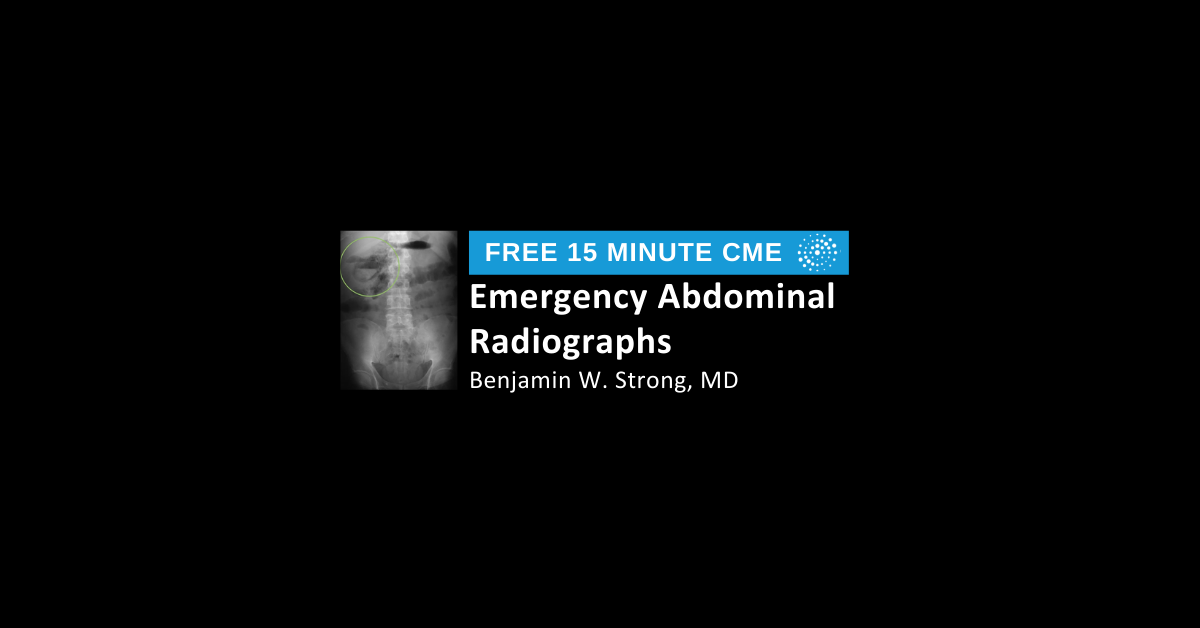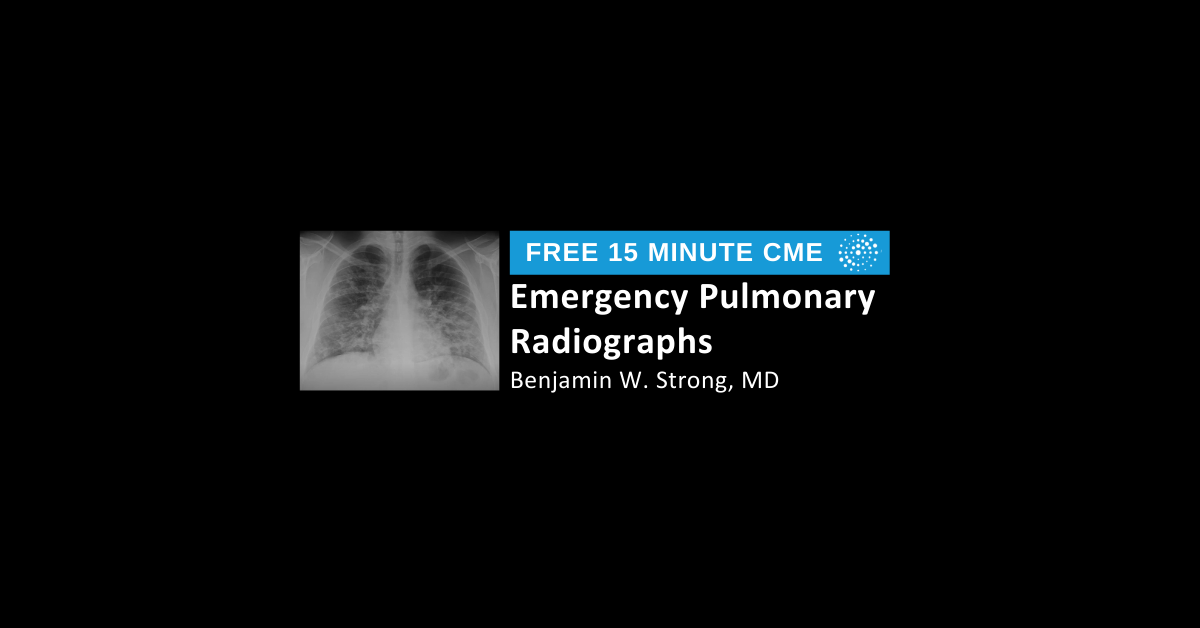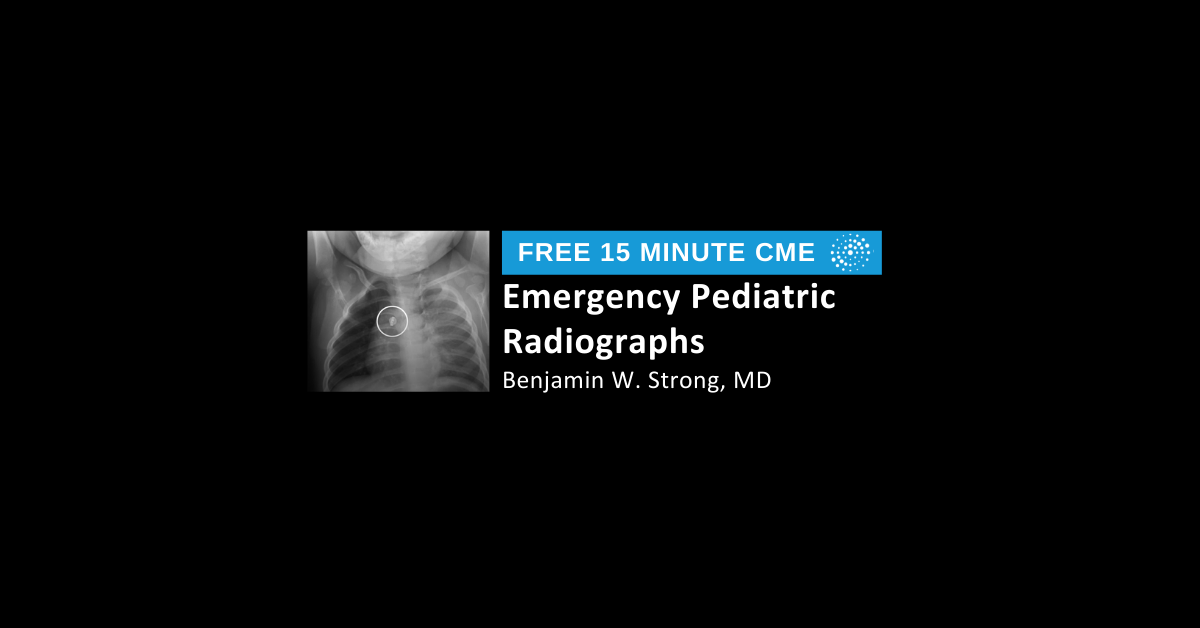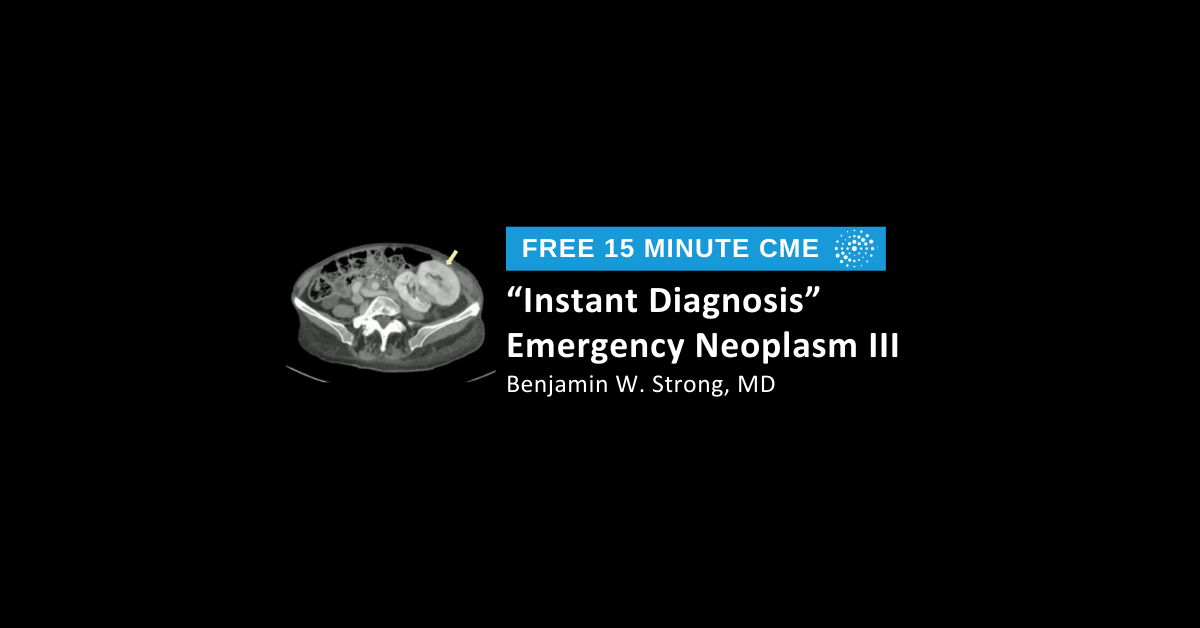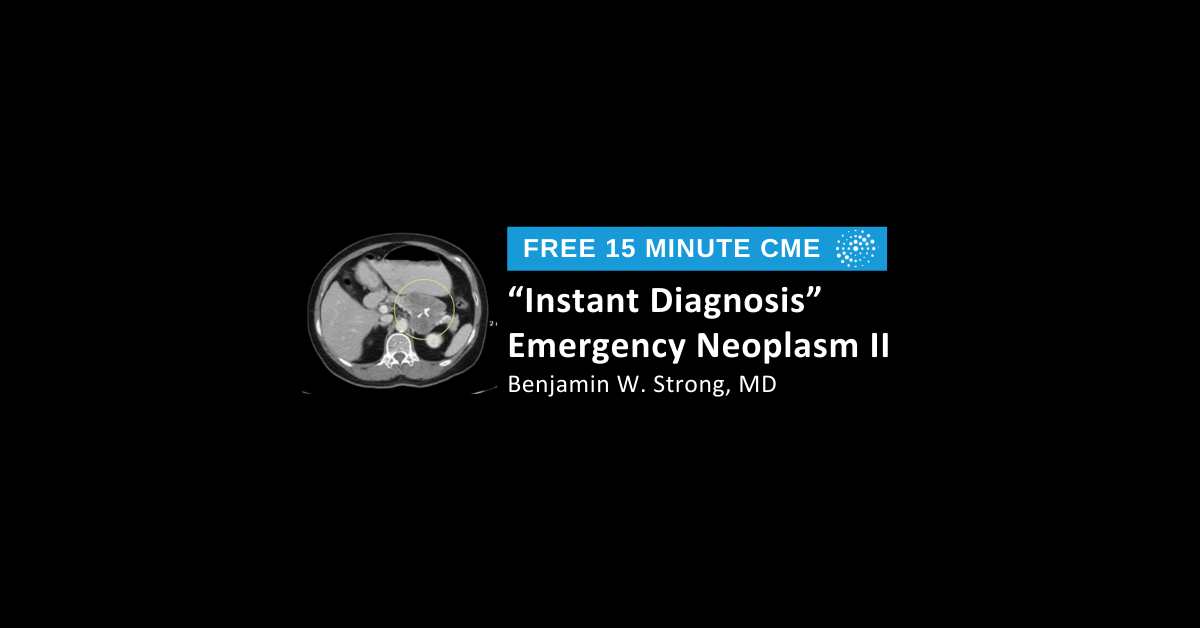.png?width=1200&height=628&name=CME_Header_1200x628%20(32).png)
Thoracoabdominal Emergencies IV
0.25 AMA PRA Category 1 Credit™
Cost: Free
Expires: 12/31/2025
Course Overview
15-minute radiology CME lecture uses annotated still images and edited, annotated cine files to demonstrate examples of different emergency presentations and pathologies. The cases are culled from an internal teaching file, our extensive quality assurance and medical malpractice databases, and from my own clinical experience. Each case is preceded by a factual graphic that depicts the gender and age demographics, incidence, risk factors, mortality, and CT sensitivity for each condition. This particular segment presents cases of postoperative ischemia, closed loop bowel obstruction, intussusception, appendicitis, and pseudomembranous colitis with discussions of the emergent nature of small bowel obstructions, the risk of colitis complicating appendicitis, and the subtle appearance of intraperitoneal gas in colonic perforations.
Learning Objectives
- Identify common emergency presentations and their demographics, incidence, risk factors, mortality, and amenability to diagnosis by CT.
- Learn typical CT findings associated with emergency presentations.
- Understand the role of CT in the emergency diagnosis and disposition of acutely ill patients.










.jpg?width=1024&height=576&name=vRad-High-Quality-Patient-Care-1024x576%20(1).jpg)







%20(2).jpg?width=1008&height=755&name=Copy%20of%20Mega%20Nav%20Images%202025%20(1008%20x%20755%20px)%20(2).jpg)




.png?width=1200&height=628&name=CME_Header_1200x628%20(30).png)

.png?width=1200&height=628&name=CME_Header_1200x628%20(29).png)
.png?width=1200&height=628&name=CME_Header_1200x628%20(28).png)
